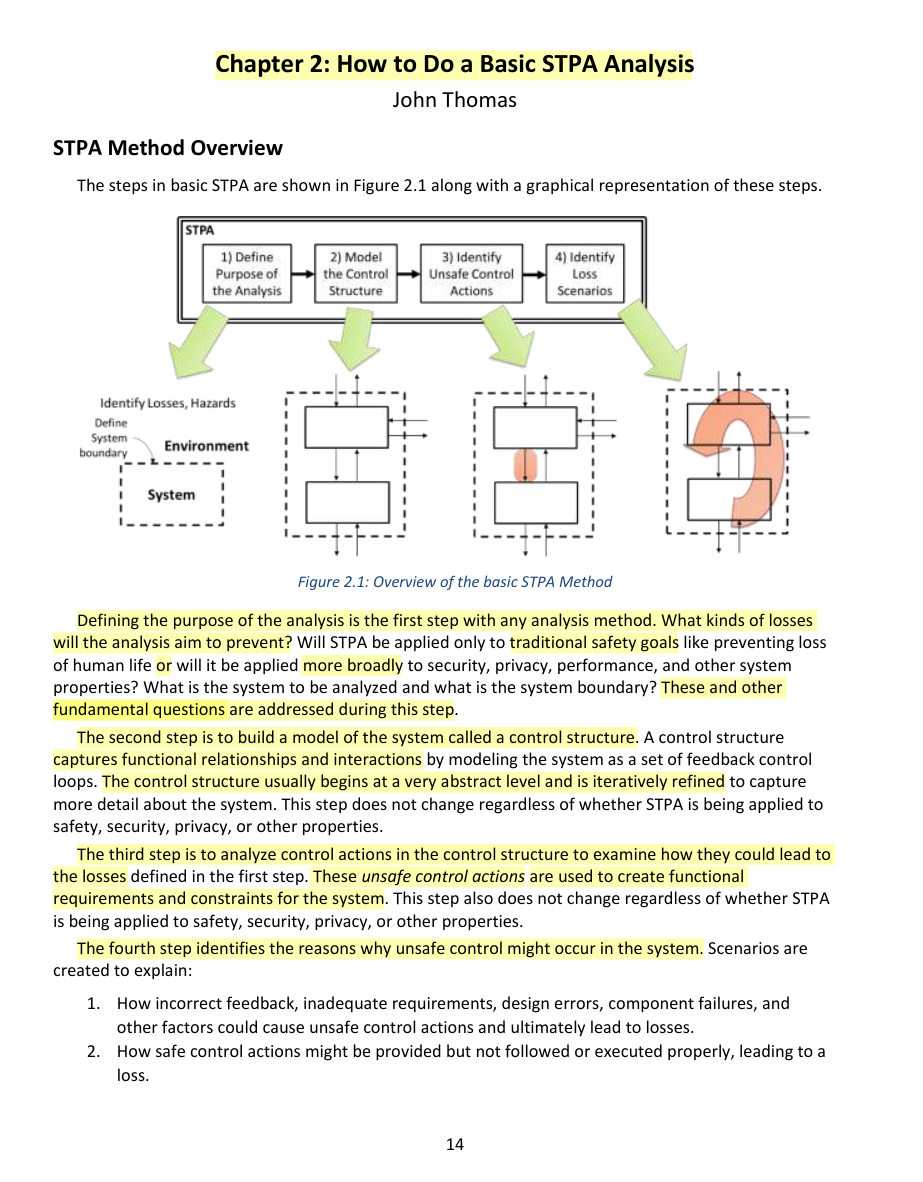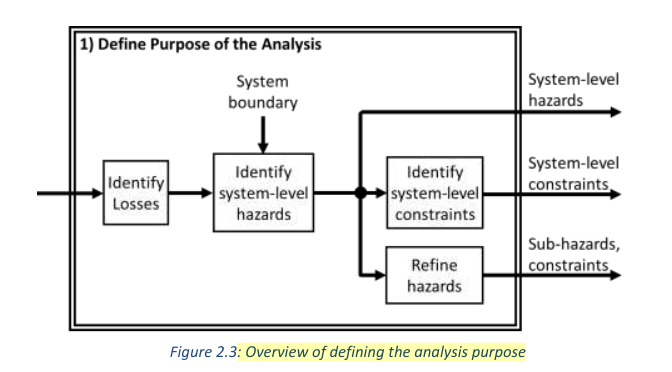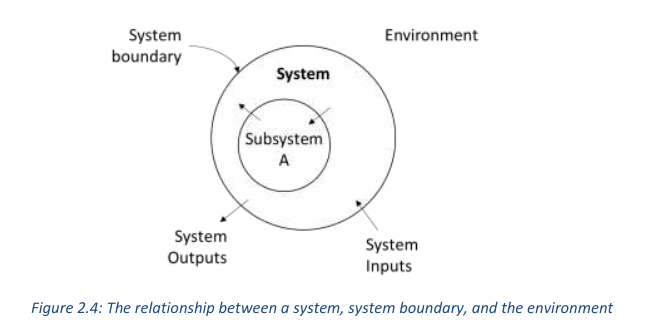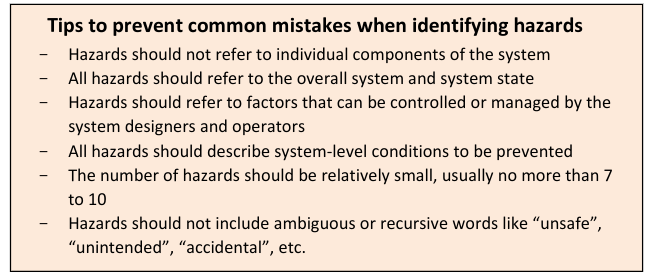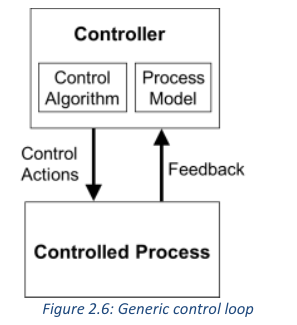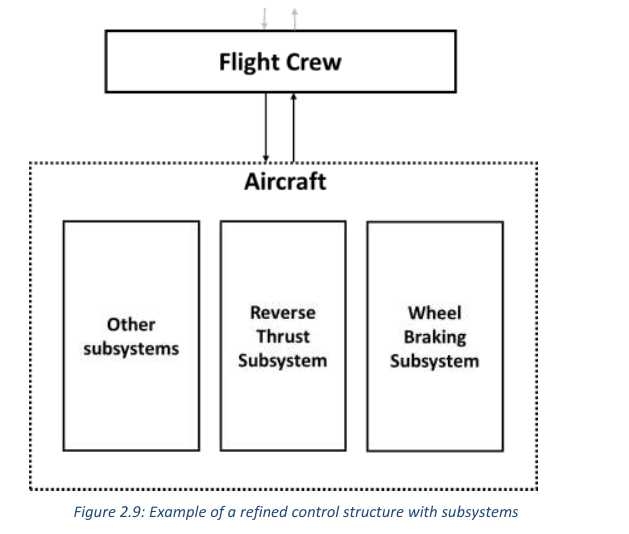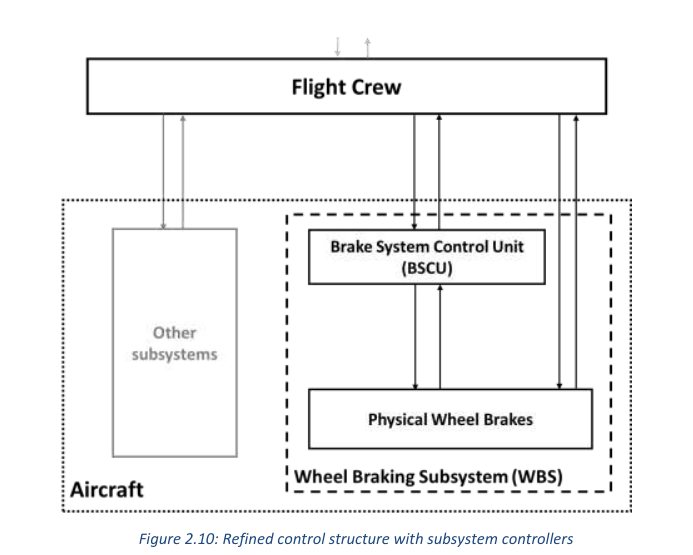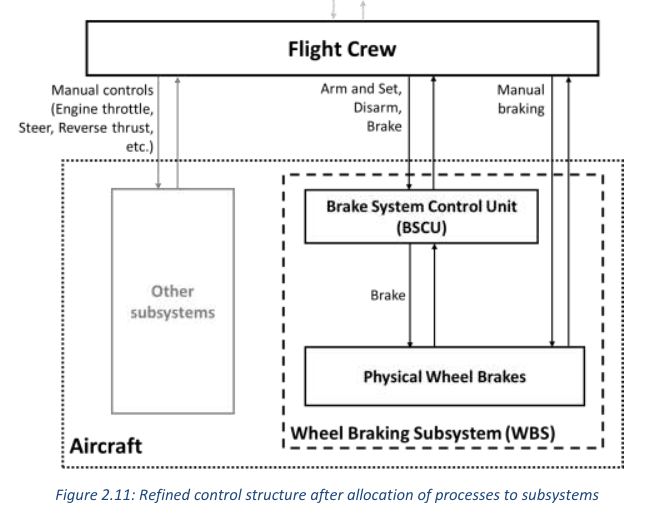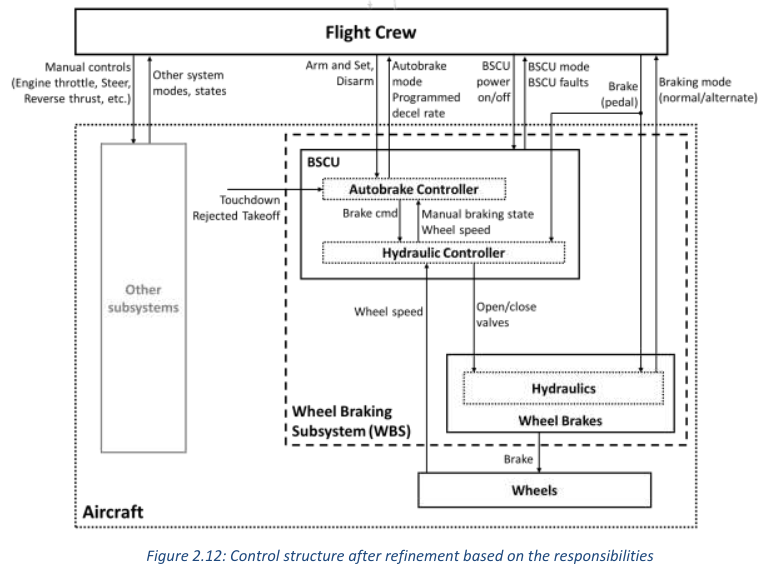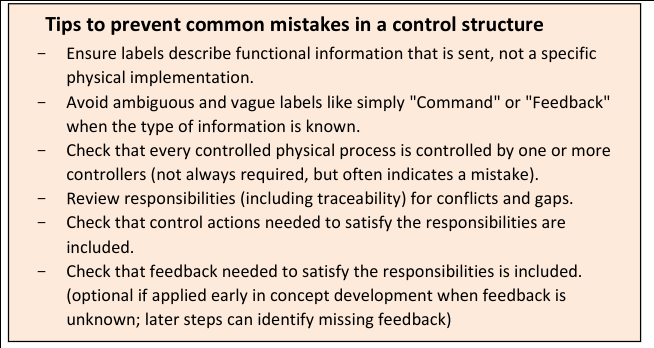📚 node [[system theoretic process analysis]]
-
a [[technique]]
- for [[hazard analysis]]
- by [[nancy leveson]] and [[john thomas]]
- [[pull]] [[stpa handbook]] [[stpa workshop]]
-
[[push]] [[stpa]]
- i love how STPA defers key steps to a later stage so they can be done systemically, once partial but complete initial modeling has taken place.
- it can be applied recursively. it could be argued that because STPA can be applied recursively the cost of abstraction is minimized or at least bound.
-
4 [[steps]]
-
- define the purpose of the analysis, including [[losses]], [[scope]], [[hazards]], [[constraints]] (optionally derived also from [[sub hazards]]).
-
- model the control structure
-
- identify unsafe control actions
-
- identify loss scenarios
-
-
step one: [[define the purpose of the analysis]]
- start with the [[losses]], which involve something of value to stakeholders
- continue by defining the [[scope]] of the system
-
find [[hazards]], which are systemic states or conditions to be prevented, and which together with (worst-case) environmental conditions lead to [[losses]].
- [[hazards]] + [[environmental conditions]] -> [[losses]]
-
find [[system level constraints]].
- they can look like [[hazards]], inverted.
- or define how the system must [[minimize losses]] in case the hazards occur.
- optionally find [[sub hazards]], which might also help define further constraints
-
step two: [[model the control structure]]
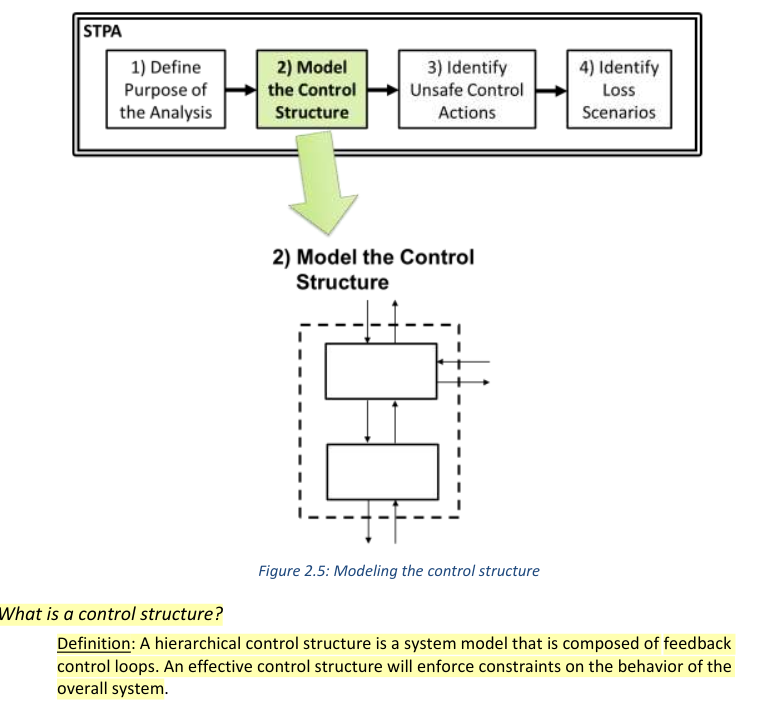
-
a control structure is a system model that is composed of feedback control loops.
- a good control structure will enforce the system level constraints.
-
control goes down, feedback goes up
- vertical axis represents a hierarchy ([[heterarchy]]? perhaps in voting systems)
- [[responsibilities]] can be assigned to each control structure entity; they are refinements of [[system level constraints]]
- [[feedback]] can be derived from [[responsibilities]] (which information does the process model need to contain?)
-
step three: [[identify unsafe control actions]]
- an [[unsafe control action]] is one that, in a particular context, will lead to a [[hazard]].
- it must include the actual (real) context in which the control action is unsafe, instead of controller beliefs; and it must be linked to a hazard.
- define [[controller constraints]]: behaviours that need to be satisfied to prevent UCAs. they can usually be derived from negations of the UCAs.
-
step four: [[identify loss scenarios]]
- a [[loss scenario]] describes the [[causal factors]] that can lead to the [[unsafe control actions]] and to [[hazards]].
- 4a: write scenarios which cause UCAs
- 4b: write scenarios where control actions are ont followed
⥅ node [[stpa-handbook]] pulled by user
- a [[book]].
[[Chapter 2]]
Good overall summary in the first page:
I wonder what the formalism is in this diagram. It is not an STPA diagram in the "main" sense as it doesn't model control loops explicitly, but is it part of the STPA framework?
First step: defining the purpose of the analysis.
[[Losses]]:
Definition of [[system]]:
[[hazards]] + [[environmental conditions]] = [[losses]]
The heart of STPA: the control loop.
Refining control structures:
On [[control]] proper:
tips to prevent common mistakes in a control structure:
Step three:
⥅ node [[stpa-workshop]] pulled by user
📖 stoas
- public document at doc.anagora.org/system-theoretic-process-analysis
- video call at meet.jit.si/system-theoretic-process-analysis
⥱ context
→ forward
causal factors
constraints
controller constraints
define the purpose of the analysis
environmental conditions
feedback
hazard
hazard analysis
hazards
heterarchy
identify loss scenarios
identify unsafe control actions
john thomas
loss scenario
losses
minimize losses
model the control structure
nancy leveson
pasted image 20210718234132 png
pull
push
responsibilities
scope
steps
stpa
stpa handbook
stpa workshop
sub hazards
system level constraints
technique
unsafe control action
unsafe control actions
causal factors
constraints
controller constraints
define the purpose of the analysis
environmental conditions
feedback
hazard
hazard analysis
hazards
heterarchy
identify loss scenarios
identify unsafe control actions
john thomas
loss scenario
losses
minimize losses
model the control structure
nancy leveson
pasted image 20210718234132 png
pull
push
responsibilities
scope
steps
stpa
stpa handbook
stpa workshop
sub hazards
system level constraints
technique
unsafe control action
unsafe control actions
🔎 full text search for 'system theoretic process analysis'
